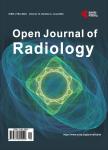Safety and Diagnostic Image Quality of Ultravist<sup>®</sup>in an Unselected Sub-Set of Chinese Patients: Data Analyses from a Previous Post Marketing Surveillance
Safety and Diagnostic Image Quality of Ultravist<sup>®</sup>in an Unselected Sub-Set of Chinese Patients: Data Analyses from a Previous Post Marketing Surveillance作者机构:Department of Radiology Guangdong General Hospital/Guangdong Academy of Medical Sciences Guangzhou China Department of Radiology The First Affiliated Hospital of Sun Yat-sen University Guangzhou China Medical & Scientific Affairs Bayer HealthCare Pharmaceuticals Beijing China
出 版 物:《Open Journal of Radiology》 (放射学期刊(英文))
年 卷 期:2017年第7卷第1期
页 面:63-74页
学科分类:1002[医学-临床医学] 100214[医学-肿瘤学] 10[医学]
主 题:Contrast Media Iopromide Adverse Drug Reaction Chinese Sub-Population Post-Marketing Surveillance
摘 要:Background: Iopromide (Ultravist®) has been shown to be a very safe CM agent in previous post-marketing surveillance studies on Western and Asian populations. Our study aimed to analyse data pertaining to the safety, tolerability and diagnostic image quality of Iopromide in an unselected sub-set of the Chinese population. Methods: we analysed data for Chinese ambulatory and in-patients who received Iopromide for an imaging procedure (in accordance with the local package insert and routine clinical practice), as part of an international post-marketing surveillance study. Use of premedication was at the discretion of the attending physician. Patient demographics, clinical history, type of examination, contrast quality and tolerability, including pre-specified adverse drug reactions, were recorded. All statistical analyses were descriptive. Results: case report forms for 20,000 Chinese patients (61.3% men) were analysed, of whom 153 patients (0.77%) had risk factors for idiosyncratic contrast media reactions (at-risk group). Use of premedication, most commonly corticosteroids, was recorded for 5658 patients (28.3%) and 86 at-risk patients (56.2% of the at-risk group), respectively. The mean (±standard deviation) dose of iodine administered was 29 ± 5.5 g. During the physician’s evaluation of image parameters, contrast quality was considered to be “good (64.7%) or “excellent (29.3%) in the majority of patients. 571 patients (2.9%) experienced at least one adverse drug reaction [most frequently nausea (0.70%) and dysgeusia (0.62%)], which were typically transient and of mild intensity. Two serious adverse drug reactions were reported [edema (n = 1), decreased blood pressure and dyspnea (n = 1)]. The incidence of adverse drug reactions was increased in the at-risk group versus the overall patient population, and tended to reduce with premedication (mainly corticosteroids). Conclusions: Iopromide was well tolerated and proved to be an efficient contrast agent in a lar



